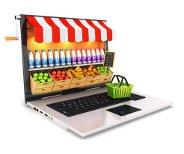Food culture is key to getting home grocery delivery right
 Home food delivery services clearly need to offer the right product selection and user interface, and they need to get home delivery right – and right into people’s kitchens. But even if those are nailed down, if home grocery and food delivery can’t take into account how folks are eating and living within the context of food culture, the chances of success are minuscule, at best.
Home food delivery services clearly need to offer the right product selection and user interface, and they need to get home delivery right – and right into people’s kitchens. But even if those are nailed down, if home grocery and food delivery can’t take into account how folks are eating and living within the context of food culture, the chances of success are minuscule, at best.
As home food delivery heats up, The Hartman Group considers what it will take for companies to succeed, given how consumers think, eat, shop and manage their daily household lives in this digital era.
One of the hottest topics in the food business today is home food delivery.
Home grocery delivery is nothing new. Grocers began experimenting with that in the 19th century. More recently, Schwan’s has been successfully doing home delivery for 60-plus years.
And using the Internet to order and pay for groceries to be delivered to one’s door has been happening as well. Early efforts in this direction by the likes of Peapod, Webvan and HomeGrocer generated considerable enthusiasm, interest and investor capital before falling victim to the dot-com collapse in the early 2000s.
But there is now a sense that grocery home delivery may finally become a bigger business proposition, capable of generating the growth and returns many have long predicted.
What remains to be agreed upon, however, is how it will work.
For years, the food industry has been busy analyzing trends, adjudicating among competing business models and predicting marketplace failure and success in this area. And this work continues, with ever more complex discussions of logistics, the role of mobile, the merits of crowdsourcing and so forth.
Our goals today are considerably more straightforward: namely, to better understand what it will take for digital home food delivery to succeed, given how consumers think, eat, shop and manage their daily household lives in this digital era.
From the user’s perspective, online home grocery and food delivery needs to get four things right to succeed. The first three are fairly clear: product selection, user interface and home delivery. The fourth is less obvious and more complex, and will prove the most challenging of all. Namely, these models will also need to address consumer lifestyles and culture.
Because even if vendors get those first three things nailed down, if home grocery and food delivery can’t take into account how folks are eating and living within the context of food culture, the chances of success are minuscule, at best.
